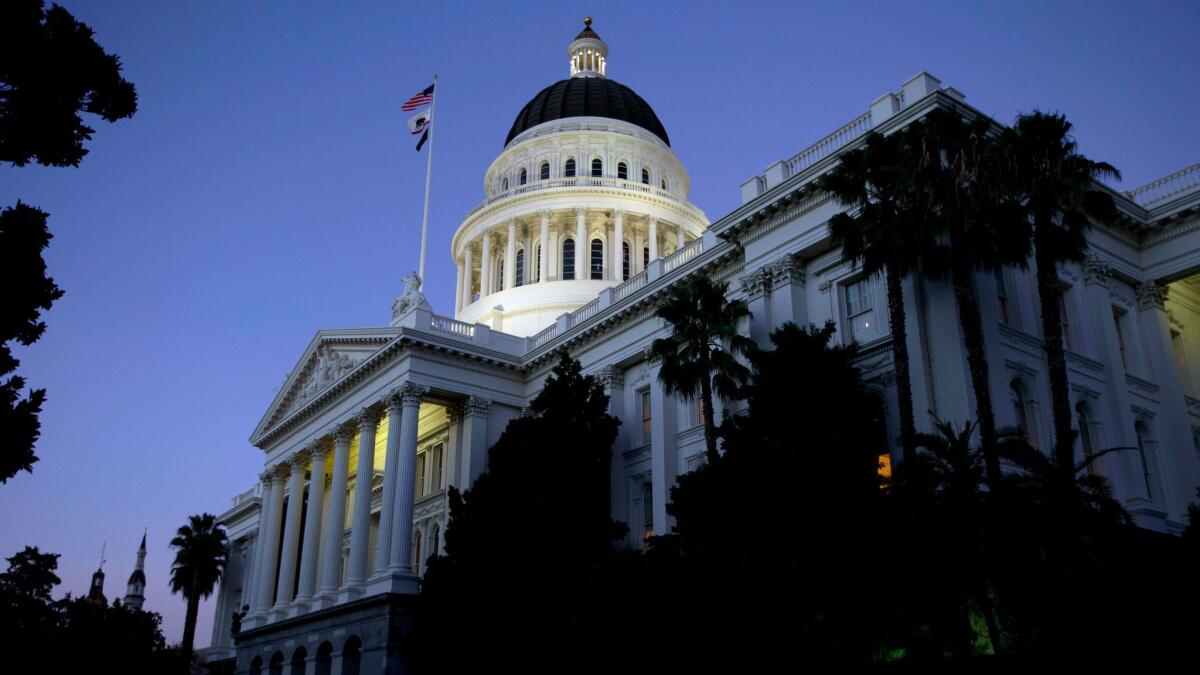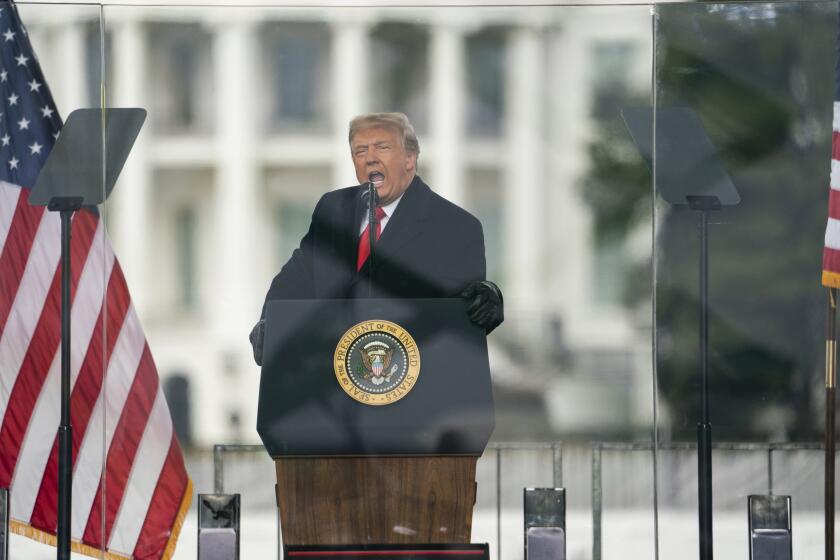Column: Political Road Map: New disclosure of hidden California campaign donors faces a do-or-die moment

Sacramento — More than six years of state Capitol wrangling over how to improve disclosure of big donors in California political campaigns comes down to a crucial vote later this week.
And in many ways, the effort to shine a brighter light on money in politics is really a fight over the fine print.
The basic elements of the “California Disclose Act” have been kicking around Sacramento since 2012. In short, it seeks to ensure that voters have more information about donors who increasingly use a series of bland sounding political committees and groups to remove any fingerprints from the cash they’re spending.
“You’re talking about a significant amount of money pouring through the political system,” said Assemblyman Kevin Mullin (D-South San Francisco), who’s shepherding the bill through the Legislature.
That money shattered records last fall for initiatives, close to a half-billion dollars of combined spending on the blockbuster list of propositions. Mullin’s Assembly Bill 249 seeks to ensure that more campaign reports of big donors aren’t limited to a list of innocuous sounding political action committees, each of which was just a middleman for the money.
“This is going to be, by a million-mile margin, the best campaign finance disclosure in the country,” said Trent Lange, president of the California Clean Money Campaign advocacy group.
AB 249 would also simplify the donor information displayed at the bottom of political TV commercials or broadcast by a speed-reading announcer at the conclusion of radio ads. The result would be the names of corporations or labor groups clearly spelled out, the kind of information that more easily helps voters decipher whose money is behind the message.
Lange argues that several hard-fought ballot measure campaigns in recent years might have turned out differently had voters had more information. In particular, his group offers examples of the muddled language at the bottom of ads in support of a 2010 ballot measure that made it harder to impose fees on industries — ads that never said the biggest donors actually were Chevron, Philip Morris USA and Anheuser-Busch.
Political Road Map: Sacramento’s closed-door deals didn’t go away with Proposition 54 »
A similar bill in 2016 was derailed by late amendments that sought to narrow the disclosure, last-minute details sneaked in through the Legislature’s opaque “suspense file” procedure for bills in appropriations committees. Lange believes this year’s version is stronger.
Still, there are parts of the big money world of politics that wouldn’t see more sunlight — the kind of omissions that may help the odds of legislative passage, but ones which also offer a reminder of the powerful political forces that like the status quo of campaigns just fine.
Most notably, the bill essentially exempts the kind of “independent expenditure” committees that raise and spend cash to influence the outcome in a variety of candidate races, money that can come in and go out in unlimited sums. These groups now dominate races for legislative and statewide offices.
“It’s not the perfect solution,” Mullin said of AB 249. “But it’s much stronger than the current law.”
Even with these concessions, the bill’s fate isn’t entirely clear. It must pass two legislative committees this week, and then an even larger hurdle: a supermajority vote in both the state Senate and Assembly.
Oh, and don’t forget a final yes or no from Gov. Jerry Brown.
There’s a school of thought among some observers that it’s almost impossible to get meaningful campaign finance reform accomplished in Sacramento, that only voters through ballot initiatives will ever really push back against California’s most powerful moneyed interest groups. The next few days in the capital city will offer some compelling evidence on that theory, one way or the other.
Follow @johnmyers on Twitter, sign up for our daily Essential Politics newsletter and listen to the weekly California Politics Podcast
ALSO:
Political Road Map: Here’s how aging baby boomers will change the impact of Prop. 13
Political Road Map: You’ll be voting in 2018 on a part of Sacramento’s big climate change plan
Updates on California politics and government
More to Read
Get the L.A. Times Politics newsletter
Deeply reported insights into legislation, politics and policy from Sacramento, Washington and beyond. In your inbox three times per week.
You may occasionally receive promotional content from the Los Angeles Times.











